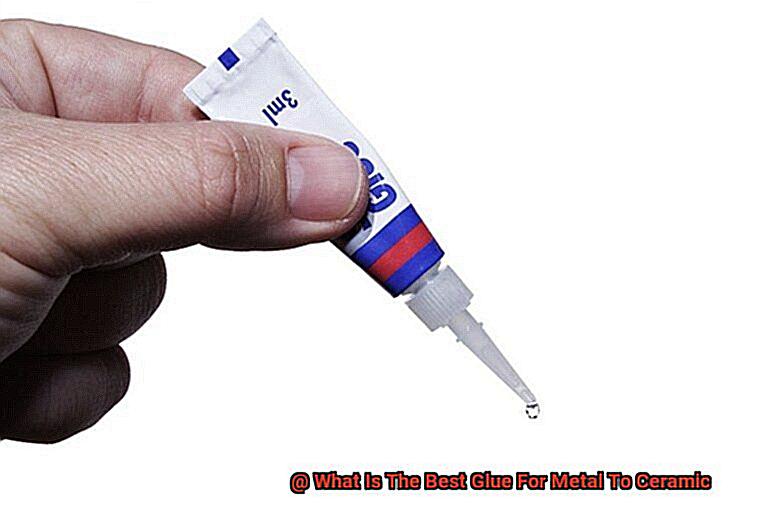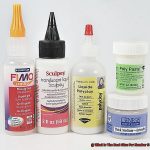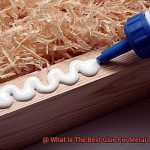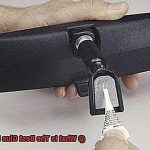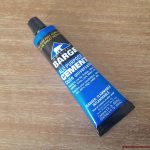Got a metal and ceramic project in mind? Or maybe you’re on a mission to rescue that beloved ceramic piece with a broken metal component. Either way, finding the best glue for metal to ceramic bonding is crucial. But with so many options out there, it can feel like searching for a needle in a haystack.
Well, fear not. In this blog post, we’ll be your trusty guide through the vast world of adhesives. We’ll explore different glues available for joining metal to ceramic, weighing their pros and cons. Plus, we’ll arm you with practical tips on selecting the perfect adhesive for your specific project needs.
So buckle up and get ready to dive into the exciting realm of glues. By the end of this post, you’ll have all the knowledge you need to achieve a rock-solid bond between metal and ceramic. Let’s get started.
What is Metal-to-Ceramic Bonding?
Contents
- 1 What is Metal-to-Ceramic Bonding?
- 2 Factors to Consider When Choosing the Best Glue for Metal-to-Ceramic Bonding
- 3 Epoxy Adhesive for Metal-to-Ceramic Bonding
- 4 Cyanoacrylate Glue (Super Glue) for Metal-to-Ceramic Bonding
- 5 Specialty Adhesives for Metal-to-Ceramic Bonding
- 6 How to Choose the Right Glue for Your Project
- 7 Tips on Applying the Adhesive Properly
- 8 Conclusion
In the realm of materials science, metal and ceramic materials reign supreme for their unique properties. Yet, how do we bridge the gap between these seemingly disparate substances? Enter the captivating world of metal-to-ceramic bonding, a process that unites these materials in perfect harmony. In this article, we will embark on a journey to explore the intricate process of bonding metal to ceramic, unveiling the various types of adhesives employed for this purpose.
The Challenge of Bonding Metal to Ceramic:
When it comes to bonding metal to ceramic, we encounter a fascinating challenge. Metal and ceramic materials possess vastly different physical and chemical properties, making their fusion an intricate affair. Metals conduct heat and electricity with unparalleled finesse, while ceramics exhibit impressive insulation and high-temperature resistance. Moreover, metals boast crystalline structures, while ceramics can be either amorphous or crystalline in nature.
Selecting the Right Adhesive:
The secret to achieving a robust and enduring bond between metal and ceramic lies in the careful selection of an adhesive. Among the array of options available, epoxy resin stands tall as a popular choice due to its exceptional bonding strength and unwavering durability. It forges formidable bonds with both metals and ceramics, offering reliable connections even in the harshest environments. Furthermore, epoxy adhesives boast commendable resistance to chemicals, moisture, and thermal fluctuations.
For those seeking swift assembly processes, cyanoacrylate glue—affectionately known as super glue—provides an enticing alternative for metal-to-ceramic bonding. Flaunting rapid curing times and remarkable bond strength, it proves ideal for time-sensitive operations. However, it is worth noting that cyanoacrylate adhesives may not exhibit the same resilience to extreme temperatures or chemicals as their epoxy counterparts.
Surface Preparation:
The key to a successful metal-to-ceramic bond lies in meticulous surface preparation. Both the metal and ceramic surfaces must be impeccably cleaned, free from any pesky contaminants such as oils, dust, or oxides. Achieving this pristine state can be accomplished through the art of solvent cleaning or employing mechanical methods like sanding or etching.
The Bonding Process:
Once the surfaces have been prepared with utmost care, it is time to embark on the bonding process. The adhesive is applied to either the metal or ceramic component, or even both if desired. The components are then pressed together with unwavering determination, ensuring optimal contact and uniform distribution of the adhesive. Subsequently, the assembly is left to cure at room temperature or subjected to specific curing conditions dictated by the adhesive manufacturer.
Factors to Consider When Choosing the Best Glue for Metal-to-Ceramic Bonding
In a world where metals and ceramics remain stubbornly separate, glues come to the rescue, bridging the gap and creating strong bonds. But how do you choose the best glue for metal-to-ceramic bonding? Let’s explore the key factors to consider on this adhesive adventure, ensuring a union that withstands the test of time.
Adhesive Type:
Epoxy resin, cyanoacrylate (super glue), polyurethane, and silicone-based adhesives are top choices. Each type has unique properties and strengths, so select one designed specifically for metal-to-ceramic bonding.
Strength and Durability:
Strong bonds are essential. Look for an adhesive with high bond strength capable of withstanding stress and strain. It should resist temperature changes, moisture, chemicals, and environmental factors that could weaken the bond over time.
Curing Time:
Time is precious, so consider the adhesive’s curing time. Quick-curing adhesives allow for faster assembly and handling, while others require longer curing times for optimal bond strength. Match your project timeline with the adhesive’s curing time.
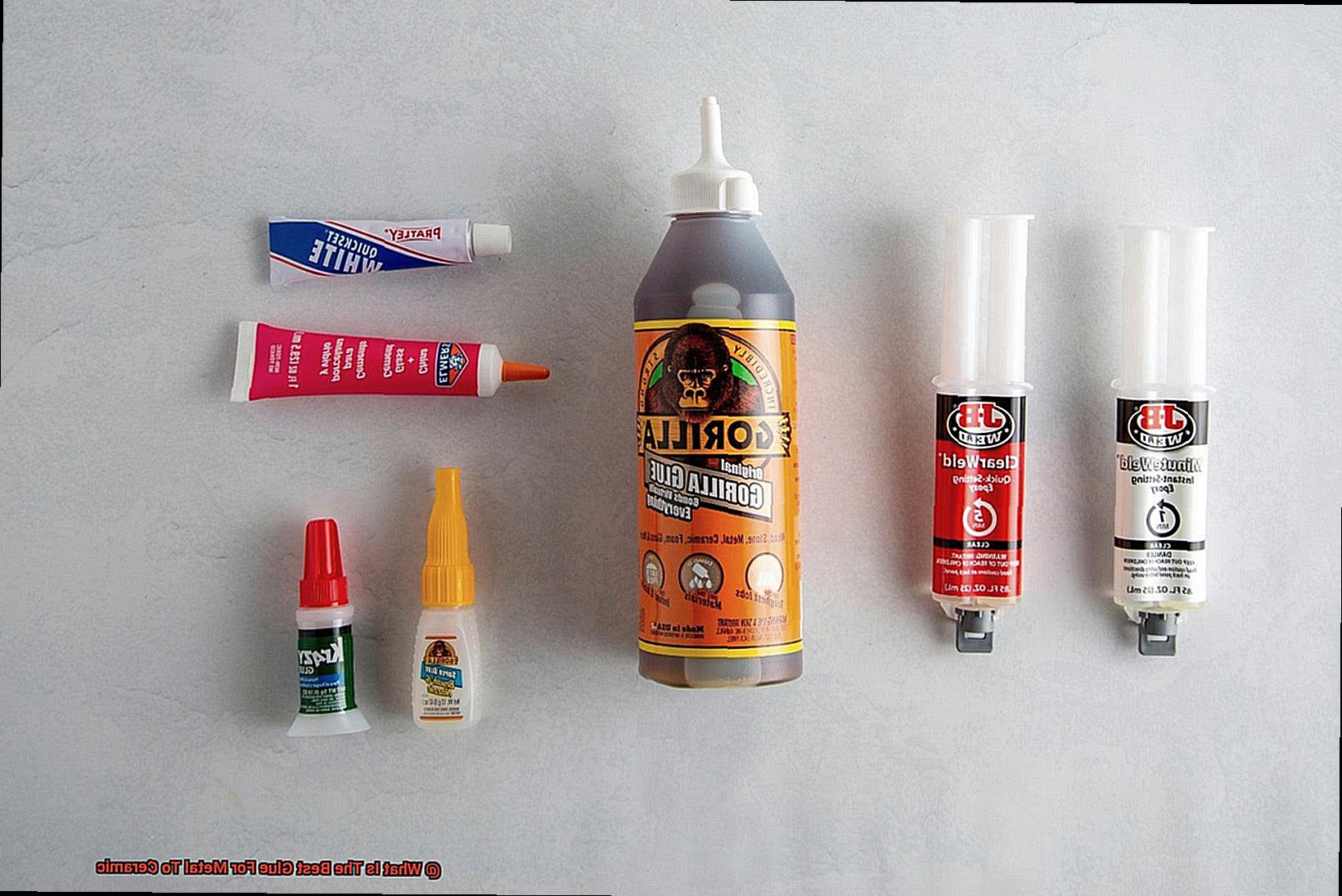
Surface Preparation:
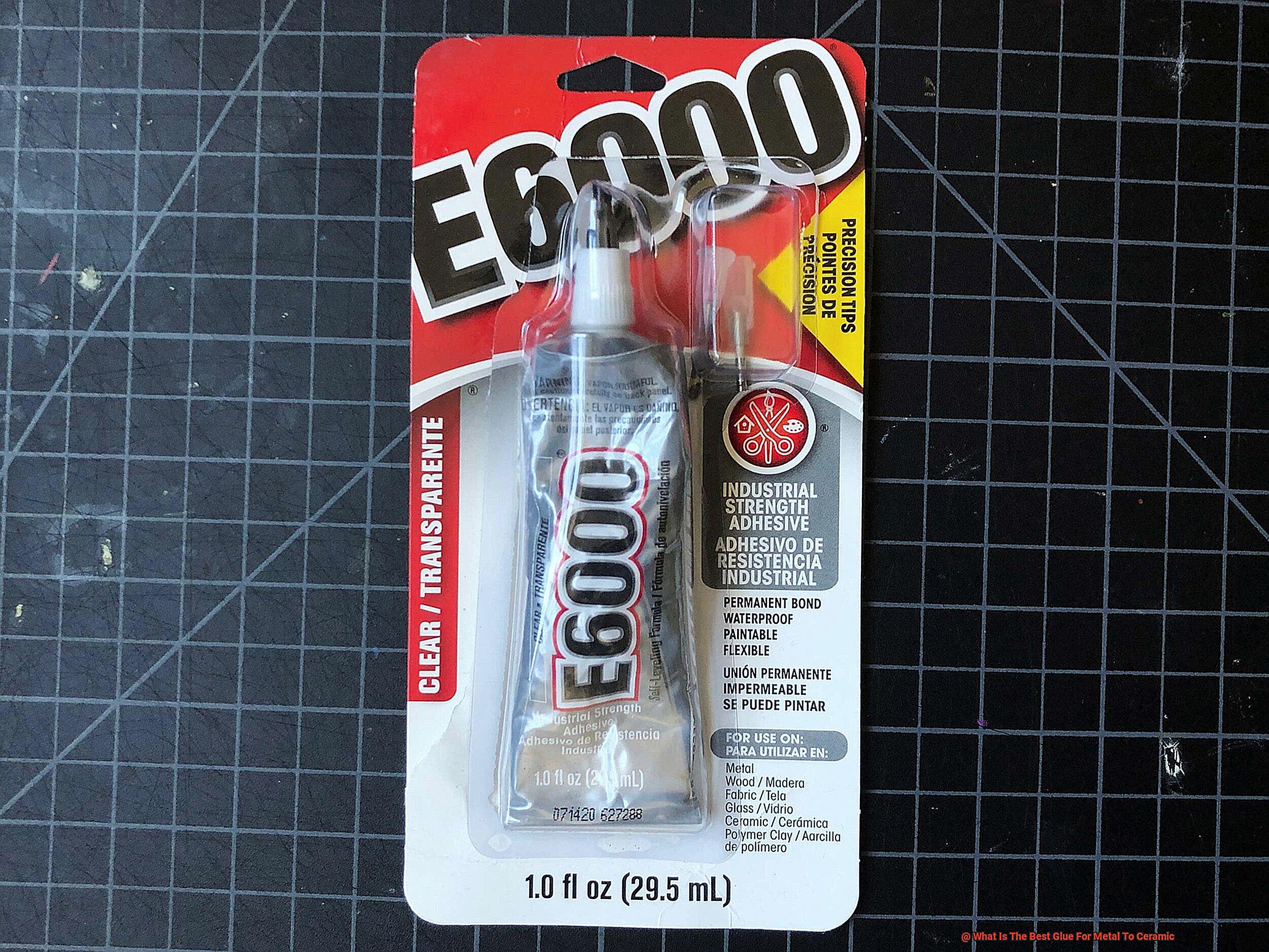
Prepare surfaces properly before embarking on this bonding journey. Cleanliness is key. Ensure metal and ceramic surfaces are clean, dry, and free from contaminants like dust, grease, or oil. Some adhesives may require roughening surfaces with sandpaper or applying a primer for better adhesion.
Temperature Resistance:
Consider the application and temperature conditions the bonded parts will face. For high-temperature projects like automotive or industrial applications, choose an adhesive that can withstand these conditions without losing bond strength or integrity.
Compatibility:
For a successful bond, ensure compatibility between the adhesive and materials being bonded. Check if the adhesive is specifically formulated for metal-to-ceramic bonding. Some adhesives work well with certain types of metal or ceramic, but not others. Also, consider compatibility with any coatings or finishes on the surfaces.
Safety and Health Considerations:
Prioritize safety and health. Some adhesives emit strong fumes or require special handling precautions like gloves or a well-ventilated workspace. Read and follow the manufacturer’s instructions and safety guidelines for safe usage.
Epoxy Adhesive for Metal-to-Ceramic Bonding
When it comes to bonding metal to ceramic surfaces, epoxy adhesives are the ultimate solution. These remarkable adhesives possess superpowers that make them the go-to choice for creating unbreakable bonds. Let’s explore why epoxy adhesives are the ideal option for metal-to-ceramic bonding.
Strength is one of the most impressive superpowers of epoxy adhesives. When you mix the resin and hardener components together, they undergo a chemical reaction that forms a bond stronger than the materials themselves. It’s like witnessing a superhero origin story. This means that your metal and ceramic surfaces will be securely fastened, with no chance of separation.
But strength is just the beginning. Epoxy adhesives also offer exceptional temperature resistance. Whether you’re working on an automotive or aerospace project, where temperature fluctuations are common, epoxy adhesives can handle it all. They can withstand extreme temperatures ranging from -40°C to 150°C or even higher. So, no matter how hot or cold it gets, your bond will remain intact.
Chemical resistance is another incredible attribute of epoxy adhesives. These adhesive geniuses can shrug off oils, solvents, and acids like it’s no big deal. This is crucial for applications where your bonded surfaces may come into contact with these substances. You don’t want your bond to dissolve when faced with a little chemical challenge, do you?
Now let’s talk about the application process for these extraordinary adhesives. Before applying the adhesive, it’s important to clean and prepare your surfaces properly. You don’t want any dust or grease getting in the way of true love.
Once your surfaces are prepped and ready, mix the resin and hardener according to the manufacturer’s instructions. Apply the adhesive to one surface and press the metal and ceramic together firmly. Make sure they’re aligned properly and apply enough pressure to ensure good contact.
Now, here’s the crucial part – curing time. Epoxy adhesives need time to develop their full strength. The curing time can vary depending on factors like temperature and humidity. So, be patient and give your bond the time it needs to become unbreakable.
Cyanoacrylate Glue (Super Glue) for Metal-to-Ceramic Bonding
Cyanoacrylate glue, also known as super glue or instant glue, is a remarkable adhesive that is widely used for bonding metal to ceramic surfaces. This fast-acting adhesive forms strong and durable bonds through a process called polymerization, creating a chemical union between the metal and ceramic surfaces.
However, it is important to note that not all cyanoacrylate glues are suitable for metal-to-ceramic bonding. To ensure a successful bond, it is crucial to choose a cyanoacrylate glue specifically formulated for this purpose. These specialized glues are like the superheroes of the adhesive world, designed to tackle the unique challenges of bonding metal to ceramic.
Before applying the glue, thorough surface preparation is essential. Both the metal and ceramic surfaces should be cleaned meticulously to remove any dirt, oil, or grease that could hinder the bond. Using a mild detergent or alcohol, ensure that the surfaces are squeaky clean and ready for bonding.
Once the surfaces are prepared, a thin layer of cyanoacrylate glue should be applied to one of the surfaces. You don’t need to be an expert painter for this step; simply use a small brush or applicator to spread the glue evenly. The goal is to achieve a strong and seamless bond.
Now comes the exciting part – bringing those metal and ceramic surfaces together. Press them firmly and hold them in place for a few minutes. During this curing process, clamps or other means of securing the bond can be used. It’s like witnessing a superhero team-up, with metal and ceramic joining forces for an epic battle against weak bonds.
One of the advantages of using cyanoacrylate glue for metal-to-ceramic bonding is its temperature resistance. It can handle both high and low temperatures without breaking a sweat. Whether you’re bonding metal and ceramic for a hot coffee mug or a cool outdoor sculpture, this glue has got your back.
However, it’s crucial to be aware of the limitations of cyanoacrylate glue. It may not be suitable for applications requiring flexibility or resistance to water or chemicals. For those specific requirements, other adhesive options are available.
To ensure the longevity of cyanoacrylate glue, proper storage is key. Keep it in a cool and dry place, sealed tightly, and away from direct sunlight. We want our adhesive superhero to stay super-powered.
Before embarking on your metal-to-ceramic bonding adventure, it is always wise to test the adhesive on a small, inconspicuous area. This step allows you to check compatibility and assess the bond strength before committing to the full application.
Specialty Adhesives for Metal-to-Ceramic Bonding
When it comes to bonding metal to ceramic surfaces, you need a glue that can withstand the unique challenges posed by these two different materials. Thankfully, specialty adhesives have been specifically formulated for this purpose, providing a strong and durable connection that can stand the test of time.
One popular type of adhesive for metal-to-ceramic bonding is epoxy resin. Epoxy adhesives offer exceptional bonding strength and are resistant to chemicals, heat, and moisture. This makes them perfect for applications where durability is key. Whether you’re bonding metal components to ceramic tiles or attaching metal handles to ceramic mugs, epoxy adhesives have got you covered.
Another commonly used adhesive in this field is cyanoacrylate, also known as super glue. Cyanoacrylates offer fast bonding and high tensile strength, making them ideal for small-scale bonding applications. So, if you need to attach small metal fixtures to ceramic surfaces quickly and securely, cyanoacrylate adhesives are your go-to option.
Polyurethane adhesives are also suitable for metal-to-ceramic bonding. They provide good flexibility and impact resistance, making them the perfect choice for applications where movement or vibration is expected. Whether you’re bonding metal brackets to ceramic pipes or attaching metal parts to ceramic sculptures, polyurethane adhesives can handle the job with ease.
Some specialty adhesives feature a dual-component system, where a resin and a hardener are mixed together before application. This allows for precise control of curing time and ensures a strong bond between the metal and ceramic surfaces.
It is important to choose an adhesive that is compatible with both the metal and ceramic materials being bonded. Certain metals may require specific adhesive formulations to achieve optimal results. Factors such as the temperature range, chemical exposure, and mechanical stresses involved should also be considered when selecting an adhesive.
Proper surface preparation is crucial for successful metal-to-ceramic bonding. Both the metal and ceramic surfaces should be clean, dry, and free from any contaminants or residues that could interfere with adhesion. It’s also a good idea to roughen the surfaces slightly using sandpaper or a similar abrasive material to improve the adhesive’s grip.
Once the surfaces are prepared, the adhesive can be applied according to the manufacturer’s instructions. This may involve mixing the components of a dual-component adhesive or simply applying a single-component adhesive directly to the surfaces. Proper curing time and conditions should be followed to achieve maximum bond strength.
Testing the bonded assembly under the intended conditions is essential to ensure the adhesive’s performance meets the specific requirements of the application. This may involve subjecting the bond to temperature extremes, chemical exposure, or mechanical stresses to evaluate its durability and reliability.
How to Choose the Right Glue for Your Project
When it comes to bonding metal to ceramic, finding the right glue can make all the difference in the success and durability of your project. To ensure a strong and long-lasting bond, consider the following factors when choosing the perfect glue for this task.
- Compatibility: Not all glues are created equal, and not all of them are suitable for bonding metal to ceramic. Look for glues that specifically mention their compatibility with these materials. Check the labels or product descriptions for indications that the glue is designed for bonding metal and ceramic together.
- Strength: Metal and ceramic are both hard surfaces, so you need a glue that can create a strong bond between them. Epoxy adhesives are well-known for their exceptional bonding strength and are often recommended for metal to ceramic applications. They provide a reliable and durable bond that can withstand heavy loads and stress.
- Temperature Resistance: Consider the temperature conditions that your project will be exposed to. If you’re bonding metal to ceramic in a kitchen or automotive application, for example, you’ll need a glue that can handle high temperatures without losing its adhesive properties. Look for heat-resistant adhesives that can withstand the temperature fluctuations.
- Drying Time: The drying time of the glue is an important consideration, especially if you have time constraints or need immediate results. Some adhesives require longer curing times, while others offer quick-drying properties. Choose a glue that aligns with your project timeline and requirements.
- Additional Features: Depending on your project’s specific needs, consider any additional features that may be important to you. For example, if you need a waterproof bond between metal and ceramic, look for glues that offer excellent water resistance. Similarly, if you want the glue to dry clear so it won’t be visible on your project, look for transparent options.
Tips on Applying the Adhesive Properly
When it comes to bonding metal to ceramic, using the right adhesive is crucial. However, simply choosing the best glue is not enough; applying it properly is equally important for a strong and durable bond. In this guide, we will provide you with tips on how to apply adhesive properly when bonding metal to ceramic. By following these steps, you can increase the chances of achieving a reliable and long-lasting bond between the two materials.
Clean and Roughen the Surfaces:
Before applying any adhesive, make sure to thoroughly clean the metal and ceramic surfaces. Remove any dust, grease, or contaminants using a mild detergent or rubbing alcohol. Additionally, roughening the surfaces slightly using sandpaper or a fine-grit abrasive pad can enhance the adhesive’s grip on the materials. Be careful not to damage the surfaces while roughening them.
Apply the Adhesive Evenly:
Follow the manufacturer’s instructions for applying the adhesive evenly on both the metal and ceramic surfaces. Some adhesives require mixing two components, while others come ready for use in a single tube. Regardless of the adhesive type, use a brush or applicator to apply it evenly across the surfaces.
Use the Right Amount of Adhesive:
Applying the correct amount of adhesive is crucial for a strong bond. Follow the recommended guidelines provided by the adhesive manufacturer to ensure proper coverage without excessive buildup. Applying too much or too little adhesive can affect the bond strength.
Allow for Proper Curing Time:
After applying the adhesive and joining the metal and ceramic surfaces together, allow sufficient time for curing. Curing time refers to the duration required for the adhesive to dry and achieve its maximum strength. Adhere to the recommended curing time mentioned by the adhesive manufacturer for optimal results.
Apply Pressure During Curing:
Applying pressure during the curing process helps create a strong bond between the metal and ceramic surfaces. Use clamps, weights, or any other suitable method to apply consistent pressure. Ensure that the pressure is evenly distributed across the bonded area to prevent distortion or misalignment.
bDcXfxi5MZI” >
Also Read: How To Glue Ceramic Back Together?
Conclusion
After careful research and analysis, it is clear that finding the best glue for metal to ceramic can be a daunting task. However, fear not. We have delved into the world of adhesives and emerged with some top contenders that are sure to bond your metal and ceramic surfaces flawlessly.
One standout adhesive that consistently receives rave reviews is epoxy resin. This versatile glue forms an incredibly strong bond, capable of enduring even the toughest conditions. Its ability to adhere to both metal and ceramic surfaces with ease makes it a popular choice among DIY enthusiasts and professionals alike.
If you’re looking for something more specific, cyanoacrylate adhesive, commonly known as super glue, is another excellent option. With its quick-drying properties and remarkable strength, this adhesive is perfect for smaller projects or when time is of the essence.
For those seeking a more heavy-duty solution, polyurethane-based adhesives are worth considering. These adhesives possess exceptional bonding capabilities and can withstand extreme temperatures and environmental factors.
Furthermore, it’s crucial to consider the surface preparation before applying any glue. Ensure that both the metal and ceramic surfaces are clean, dry, and free from any contaminants or oils that may hinder proper adhesion.
In conclusion, when it comes to gluing metal to ceramic, epoxy resin, cyanoacrylate adhesive (super glue), and polyurethane-based adhesives are all fantastic options. Each offers unique benefits depending on your project’s requirements.

